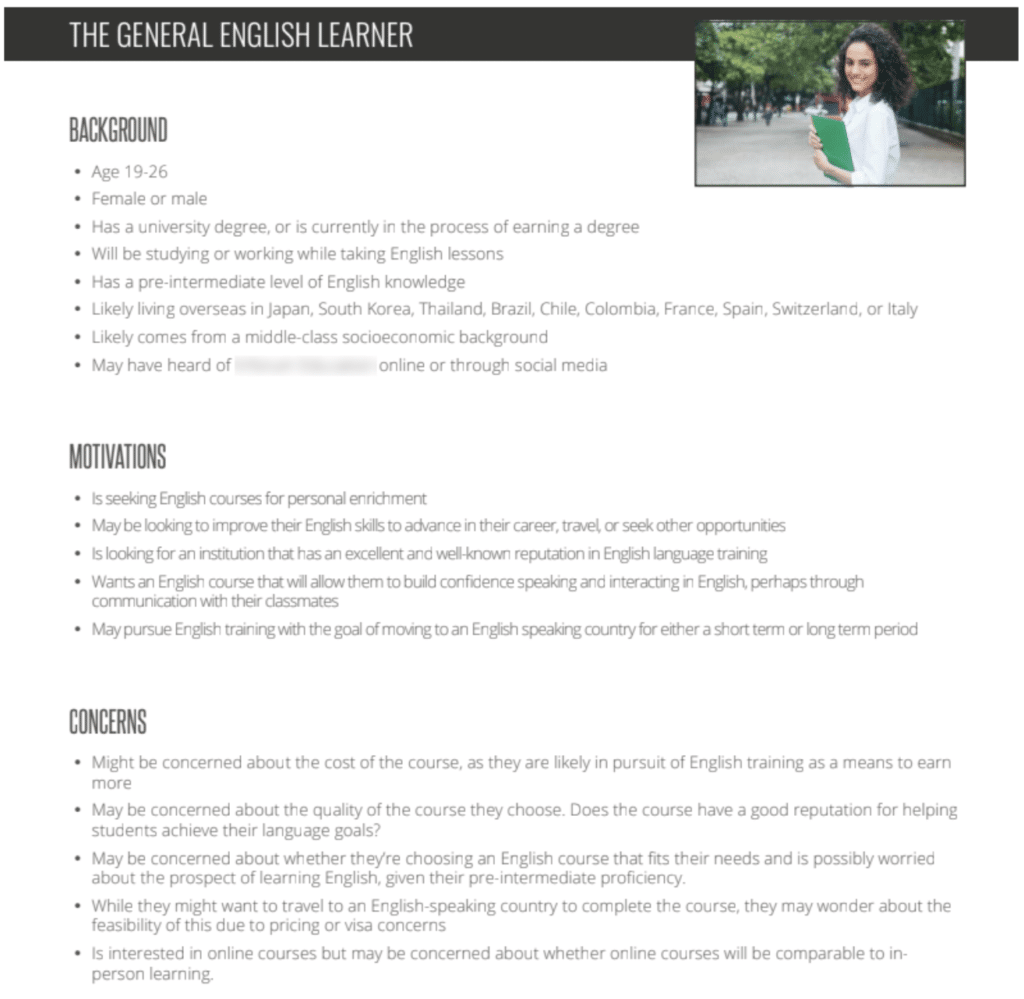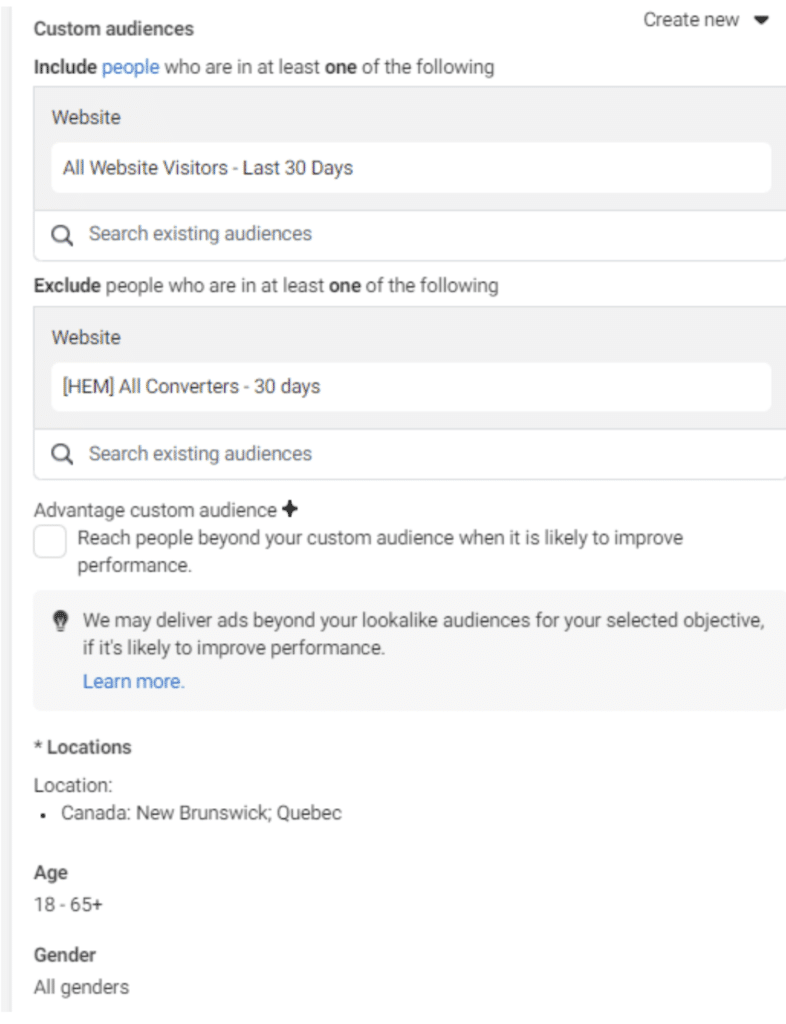Marketing strategies for language schools: Four ways to benefit from paid ads and inbound
This special feature is sponsored by Higher Education Marketing.
Language learners are looking for outstanding educational experiences that allow them to reach their language proficiency goals better. Schools and centres catering to this specific group of students can use their unique programme offerings, campus location, vibrant community, and other key factors to highlight the value of their institution. These marketing strategies for language schools can go even further when combined with effective inbound and advertising techniques.
Discover how your language school can benefit from applying the industry’s top-paid inbound marketing and advertising strategies. From accurate student personas to retargeted advertising, you’ll learn insights to help you take your student recruitment efforts to the next level.
1. Connecting with target student personas via engaging content
Before starting any marketing or advertising initiatives, schools need to understand their target audience. Student personas come in here: semi-fictional representations of your ideal prospects – developed based on actual student data from your school. Student personas give you a robust and reliable overview of the key messages you need to cover in your content so that your school effectively addresses its prospects’ motivations and concerns.
According to Nichollas Saucedo, Manager of Search and Analytics at Higher Education Marketing, “The school has to identify who is the student they are looking for, what their interests are, where they come from, [and] then combine that with knowledge about which are the main countries or regions that have interested students with purchasing power to actually attend.” This is especially the case for language schools looking to attract international prospects.
Example: Below is a snapshot of the “General English Learner,” a specific student persona crafted by Higher Education Marketing for a language school. The persona document includes key background information along with relevant motivations and concerns:

Once language schools fully understand their audience, they can begin crafting engaging content that performs well organically. For instance, many language learners committing to a study abroad programme are worried about adjusting to their new environment. CLC Canada addresses this concern by presenting tips and tricks to help with culture on its social media account:

2. Creating compelling offers and CTAs that drive results
Successful inbound marketing for language schools relies on compelling calls to action (CTAs). These CTAs must introduce offers that capture your language learner’s interest and attention, motivating them to take the next step. Consider the type of content they would want to consume and tailor your school’s offers and CTAs to highlight a specific value.
Each marketing activity designed to initiate an interaction with your school or guide your prospects further down the admissions funnel should feature a clear CTA. Not only would it need to be visually eye-catching, but it would also need to be carefully worded for maximum impact.
Example: EC English provides interested prospects with email newsletter content highlighting various aspects of its unique selling proposition. In one of these emails, the school focuses on the benefits of studying English and traveling. The primary CTA urges prospects to get in touch, with the button strategically positioned throughout the email.

3. Tapping into an international market with better targeting
Different types of paid ads can supplement many marketing strategies for language schools. The key is to know your audience and market. Schools looking to expand their reach or improve their visibility with a specific audience can benefit significantly by revisiting their targeting strategy, mainly when dealing with international audiences.
Saucedo says, “Language schools can benefit and boost their enrolments by targeting international markets. [They] can offer many advantages that local schools in other countries can’t, such as native-speaking teachers, an immersive environment, cultural learning, and even higher education pathways.”
With this in mind, many schools may want to shift their advertising focus and target international markets. In these cases, conducting your market research and targeting larger cities instead of entire countries is essential. Using location-based targeting, you can tailor your messaging and study abroad offerings so that they may better resonate with your international prospects.
It’s also worth spotlighting retargeting as a valuable advertising strategy for language schools. In response to whether or not retargeting is a good approach, Saucedo gives a resounding “Yes!” That’s because it allows your school “to keep impacting users that already visited the website with school ads even when navigating through different sites or social media. Retargeting is always good so that people don’t forget the brand.”
Example: The screenshots below show the custom audience settings for a retargeting ad on Facebook (first image):

4. Using search and social ad campaigns for lead generation
Lead generation is a key subject for any language school seeking to boost enrollment numbers. To generate results, you can look into search and social media advertising as marketing strategies for language schools, helping you reach different audiences and increase your chances of drawing in leads.
“Search ads are responsive while social media ads are reactive,” explains Saucedo. That means “search engines reach users actively looking for a course or programme while social media proactively impacts users with specific interests relevant to the program.”
Understanding these differences can help your team develop successful search and social media ad campaigns. Another tip is to carefully review how other parts of your marketing are working in tandem with these efforts.
For instance, “Good tracking with well-defined KPIs is essential for identifying the performance of different markets,” says Saucedo. That includes “making sure the Search Engine Optimization (SEO) is being properly managed and optimised to complement the ads work, and keeping an eye on the website analytics as a whole—not only paid data, [which] can bring powerful insights about marketing strategies.”
Conclusion: Why developing marketing strategies for language schools is key
Having strong data-driven marketing strategies for language schools is incredibly important for the success of your team’s efforts. A clear and well-defined campaign enforced by SMART (Specific, Measurable, Attainable, Relevant, and Time-bound) goals and accurate data from your school can help you generate the results you need, all while contributing to a higher return on investment.
By working with education marketing experts and staying on top of changing industry trends, you’ll be in a better position to identify areas for improvement and optimise for better results.
















